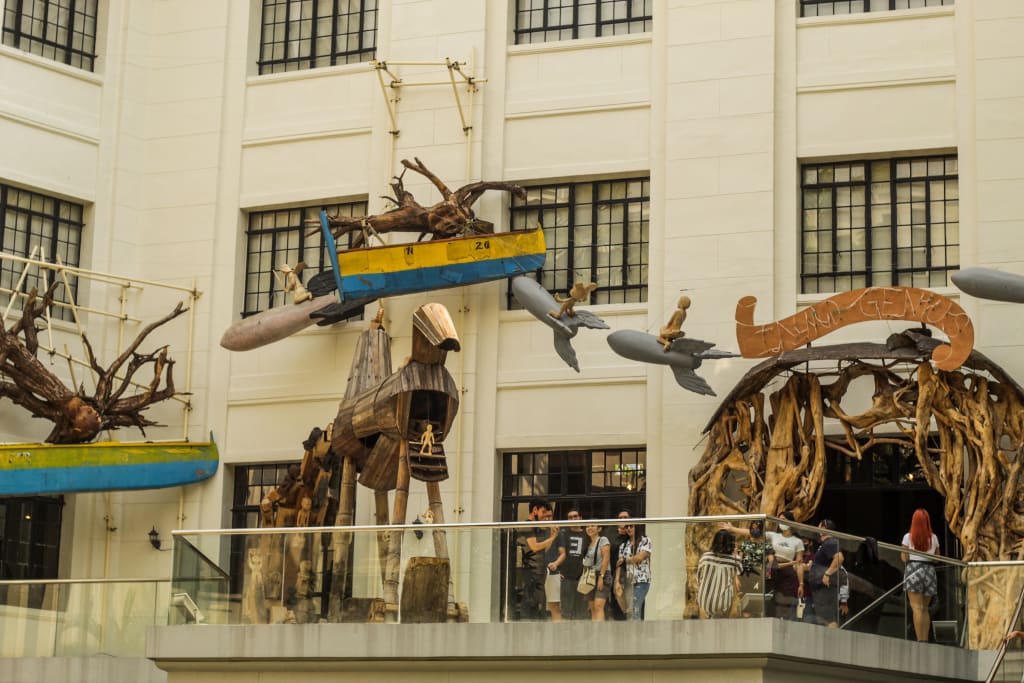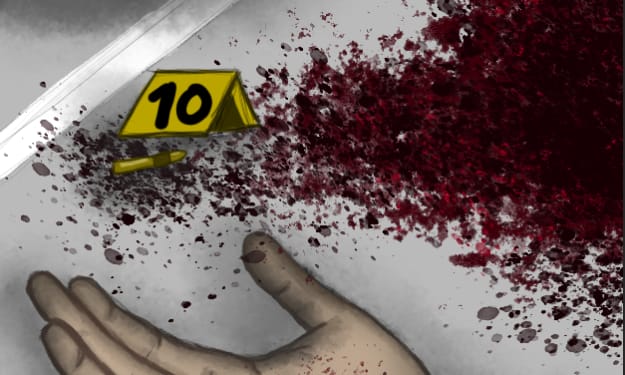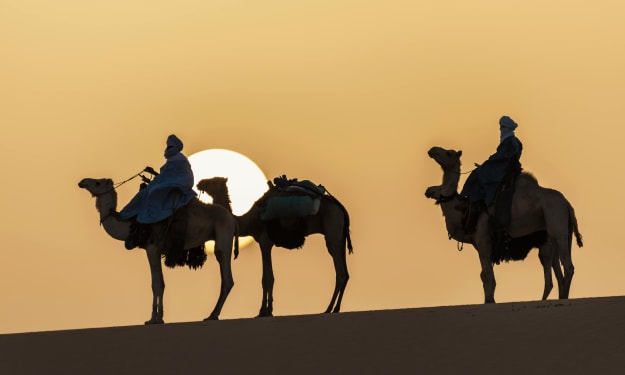RETURN, REVISIT, AND REMEMBER: CELEBRATING THE ‘INDIO-GENIUS’ OF THE FILIPINOS
Once again, Magellan’s ship returned to the Philippine archipelago. Only this time, it’s on the marble floors of the National Museum of Anthropology as one of the installation artworks made by National Artist Kidlat Tahimik on October 22.

Once again, Magellan’s ship returned to the Philippine archipelago. Only this time, it’s on the marble floors of the National Museum of Anthropology as one of the installation artworks made by National Artist Kidlat Tahimik on October 22.
The return of the massive ship at the “INDIO-GENIUS: 500 Taon ng Labanang Kultural (1521-2021)” exhibit seems to have served many symbolisms, starting from the return of the exhibition itself on the Philippines’ shore after its show at the Palacio de Cristal del Retiro in Madrid on 2021.
THE RETURN OF THE EXHIBIT
The exhibit that was previously entitled “Magellan, Marilyn, Mickey, and Fray Damaso: 500 Years of Rock Star Conquerors” had started with two small wood carvings of Inhabian the goddess of the wind in Ifugao and Marilyn Monroe, according to Kawayan de Guia, son of Kidlat Tahimik.
“Fifteen years ago, he was using these carvings as metaphors in filmmaking and independent filmmaking. The independent filmmaker has the freedom of telling his own stories and Marilyn is representing Hollywood and commercial filmmaking,” Kawayan explained.
He also added that Kidlat’s process of his artworks is still structured like a filmmaker, he starts from a small idea until it becomes more complex.
“That’s how it started dalawang maliit na wood carving tapos pinalaki at nadagdagan nang nadagdagan. So yung paglilikha nya ng mga trabaho niya really starts on the small idea and then develops. In a way you can say na yung pagiisip nya parang film pa rin or filmmaker.”
The two small wood carvings had grown into an exhibit that took four to five months to build at the National Museum according to Kawayan’s estimation.
The exhibit opened to the public on October 22, the day the exhibit returned to its roots.
THE RETURN OF ENRIQUE DE MALACCA
The ship also bears the symbol of the return of Enrique de Malacca – Magellan’s slave who was presumed to be a Filipino.
Kidlat’s creation has Enrique and Magellan’s figures on the front deck of the ship. For him, his artwork wasn’t a celebration of the arrival of Christianity nor Magellan’s, but to honor Enrique de Malacca who happens to speak Cebuano.
According to Kawayan, the 500th anniversary of Enrique is very significant for his father as he believes there might be a chance that Enrique is a Cebuano who was kidnapped by the slave traders in Cebu, sold to Magellan, went to Europe, then came home here in the Philippines with the ship.
“My father said Enrique was the first balikbayan and the first Filipino who had traveled around the world, we should honor him,” Kawayan stated.
Although Enrique was certainly a native of the Malay Archipelago, the truths about his origin are still debated by historians.
Nevertheless, if the theories are true, then the Malay native who speaks Cebuano has also returned to its roots.
THE RETURN TO OUR ROOTS
As you roam around the museum, there are LED screens that plays the video of Kidlat Tahimik over and over again. And just like the exhibit itself, the video bears his message for the visitors who took the time to look back on their indigenous roots.
“As long as we don't deny the knowledge of our grandfather and grandmothers, our forefathers, the ancestral knowledge that is second to none, then that can balance our world today,” Kidlat on his video message.
The title of his exhibit; “Indio-genius” which sounds like ‘Indigenous’ was also illuminated when he explained the theme of the show – that there’s wisdom in our indigenous roots, all we have to do is revisit and remember.
In an interview with Kawayan de Guia, he stated that his father believes that it doesn't matter if there are only a few people who will fight for preserving the indigenous culture, the important thing is that the knowledge will still be passed on so that it would survive on the influence of colonialism.
“Ang paniniwala ni tatay ay it doesn’t matter if we’re five people left or 2,000 people left. ‘yong importante mapapasa mo yung kaalaman, ‘yong lima na yan mapapasa mo doon sa lima ulit para makasurvive (yung kultura) dito sa panahon na ‘to nang bombardment of outside forces (colonialism)”
Indeed, the exhibit has featured the history of the cultural struggles of the Filipino people over the last 500 years.
Several art installations he has made through the years with materials such as baskets, dried palm trees, stones, and wood from typhoon-stricken trees were displayed.
Kidlat’s closing remarks on his message were, “Ang ‘Indio-genius’ ng ating mga ninuno, balikan natin at isama natin sa pag-modernized natin. Mabuhay ang Indio-genius ng mga Pilipino.”
Truly, long live the ‘genius’ stored on every artwork that has been exhibited on the floors of the National Museum of Anthropology. The wisdom shall be passed unto every museum-goer who will wander through the show.
THE FOURTH TO RETURN
As it seems, it wasn’t just the return of the exhibit, the return of Enrique de Malacca, or the return to the wisdom of the ancestors that the ship symbolizes. But as well as the return of the Filipinos to their roots.
If you’re ready to come home, the ship will wait for you at the National Museum of Anthropology.
About the Creator
Ma. Carmela Maurice Marinda
She writes.
Enjoyed the story? Support the Creator.
Subscribe for free to receive all their stories in your feed. You could also pledge your support or give them a one-off tip, letting them know you appreciate their work.






Comments
There are no comments for this story
Be the first to respond and start the conversation.